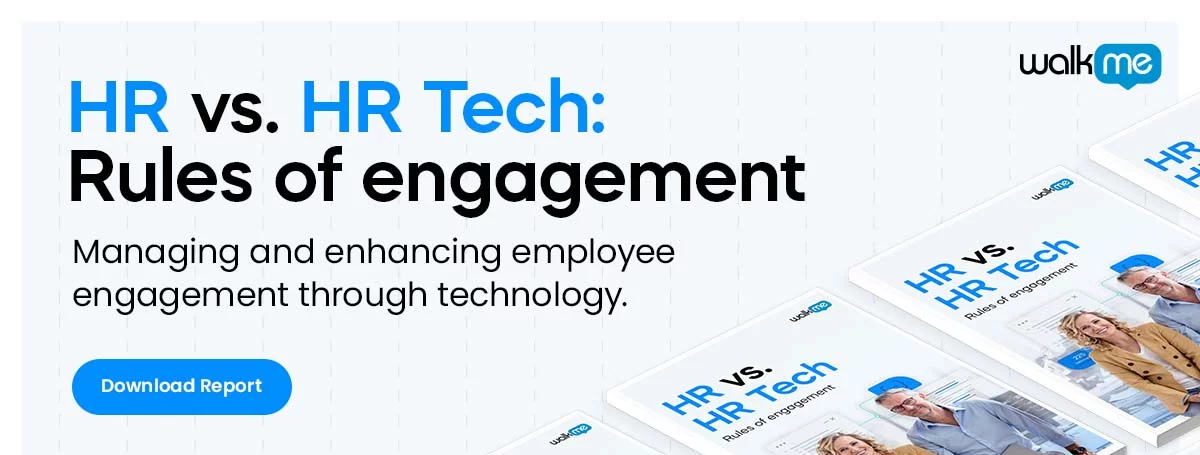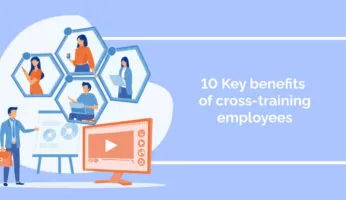
In this post, we’ll outline a 12-point employee offboarding checklist that covers the key elements you should include in every offboarding process.
Read on for more details about each step.
A 12-Point Employee Offboarding Checklist
Having a checklist can simplify your own workflow and ensure that nothing gets left out when you offboard employees.
Here are a few of the most important items to add to your offboarding template:
1. Contact employees to coordinate the departure process
Regardless of whether the employee is leaving willingly or whether they are being terminated, it is important for HR to contact the employee immediately.
During this initial contact, it is important to convey:
- The HR contact person
- The general schedule
- What the offboarding process looks like
- The employee’s responsibilities
Also, be sure to make the employee feel comfortable and stress that they can always ask questions.
2. Inform relevant parties about the departure
Other teams will need to stay involved with the process – people that need to know about the departure schedule include:
- Managers
- Coworkers
- IT
- HR
To make the departure process easier, use a project or task management app that has collaboration features, such as commenting, checklists, and a calendar.
3. Schedule and conduct an exit interview
An exit interview is among the most important parts of the offboarding process.
Done correctly, it can provide important insights into why the employee is leaving, what their impression is of the organization, and possible areas of improvement in the business.
When conducting the interview, be sure to ask:
- Targeted questions about the employee’s experience
- Why they are leaving
- What they liked and didn’t like about the organization, their team, and their work environment
- The quality of employee training and career development
- If they have suggestions for improvement
Be sure to make the employee feel comfortable, otherwise they may restrict their answers, which will limit the value of the feedback.
4. Plan to transfer and preserve the employee’s knowledge
Employee skills and knowledge is an asset, so it should be preserved as much as possible.
There are a few ways to do this:
- Have employees train their replacements
- Use workflow automation tools, such as DAPs, to record walkthroughs and automations
- Have employees document workflows and write out step-by-step instructions
- Add that information to an internal knowledge base
Offboarding is part of a transition from one employee to the next, so knowledge transfer is one of the most vital pieces of this process.
5. Schedule IT account closures and security restrictions
Security and cybersecurity are of paramount importance during the offboarding process. Therefore, IT staff will also need to remove access upon the employee’s departure – preferably within minutes.
This means:
- Changing passwords
- Removing that employee’s IT accounts
- Restricting physical access to the building or campus
- Updating internal records
As mentioned, non-HR staff will take care of this step, so it is necessary to closely coordinate with those teams.
6. Write a recommendation if warranted
In cases where employees will leave on good terms, employees may need a written recommendation.
Every company is different, but it can be convenient to have this written before the employee leaves.
The HR staff in charge of offboarding, therefore, should mention this to both the employee and the manager in advance.
7. Schedule a time to process outgoing paperwork
There are a number of documents that will need to be processed and finalized after the employee leaves.
A few include:
- Benefits packages
- Retirement packages
- Severance packages
- The employment contract
- Address update forms
The employee’s last weeks at the organization will likely be busy, so it is a good idea to schedule this as early as possible.
8. Recover company assets
When the employee does leave, they may need to return company property, such as:
- IT hardware
- Cellular phones
- ID cards
- Uniforms
Each employee will probably have their own list of items that need returning. HR and the employee’s manager should create that list and check it off when the employee departs.
9. Plan for work reassignment
A proper hand-off of duties can minimize the chances of mistakes, errors, or disruption in the workplace.
Managers will therefore need to sit down with the employee to list out their duties and ensure that each of those tasks are being handed off appropriately.
In some cases, this may mean offloading tasks onto other team members. In others, the employee may simply need to train or cross-train employees on those same tasks.
10. Show your appreciation
Throughout the process, it is important to make employees feel comfortable about their decision.
On the one hand, this can leave employees with a positive impression of the business.
On the other, it is just the courteous way to act, regardless of the circumstances.
To ensure that this step doesn’t get forgotten, consider adding comments or notes in your template to remind you – also consider repeating phraseology that demonstrates your appreciation and gratitude for the employee’s hard work.
11. Stay in touch
Staying in touch with employees can go a long way towards:
- Boosting the employer branding
- Enhancing the company’s reputation in the marketplace
- Maintaining a positive relationship with the employee
Over the long term, seemingly “small touches” such as this can even affect other important employee metrics, such as recruitment costs, talent management costs, and even the organizational culture.
12. Evaluate the offboarding process
Periodically, evaluate the offboarding process itself to ensure it is doing its job.
Here are a few ways to do this:
- Assess the exit interview to ensure its questions are appropriate
- Evaluate how well exit interview data is being applied in the business
- Check with former employees and ask about their perception of the offboarding process
- Ask others involved in the process, such as IT staff and managers, if it needs improving
In short, the more one actively strives to improve the offboarding process, the better it will get over time.
WalkMe Team
WalkMe spearheaded the Digital Adoption Platform (DAP) for associations to use the maximum capacity of their advanced resources. Utilizing man-made consciousness, AI, and context-oriented direction, WalkMe adds a powerful UI layer to raise the computerized proficiency, everything being equal.



